Are you looking to revamp your home or office space and create a truly inspiring environment? decorating is a dynamic and creative process that requires careful planning and execution. One of the most crucial steps in the decorating process is to make an interior design mood board. A mood board is a visual tool that helps you organize your design ideas, select color palettes, choose furniture and accessories, and bring your vision to life. It serves as a creative compass, guiding you through the myriad of choices and ensuring a cohesive and harmonious design outcome.

A mood board acts as a springboard for your design journey, allowing you to explore different themes, styles, and concepts. It serves as a visual representation of your design vision, helping you to gather and curate inspiration, and ultimately translate your ideas into a tangible and captivating space. By compiling images, textures, colors, patterns, and materials onto a single board, you can visualize how all the elements will work together and create a harmonious composition. This powerful tool allows you to see the big picture and make informed design decisions with confidence.
How to make an interior design mood board is an essential component of the decorating process. It empowers you to define your design objectives, explore various styles and themes, and communicate your vision effectively. By curating a collection of inspiring images, textures, and colors, you can navigate the design process with clarity and creativity, ensuring that the end result reflects your unique style and transforms your space into a truly remarkable and captivating environment. So, let’s dive in and discover the art of creating an exceptional interior design mood board.
What’s A Mood Board
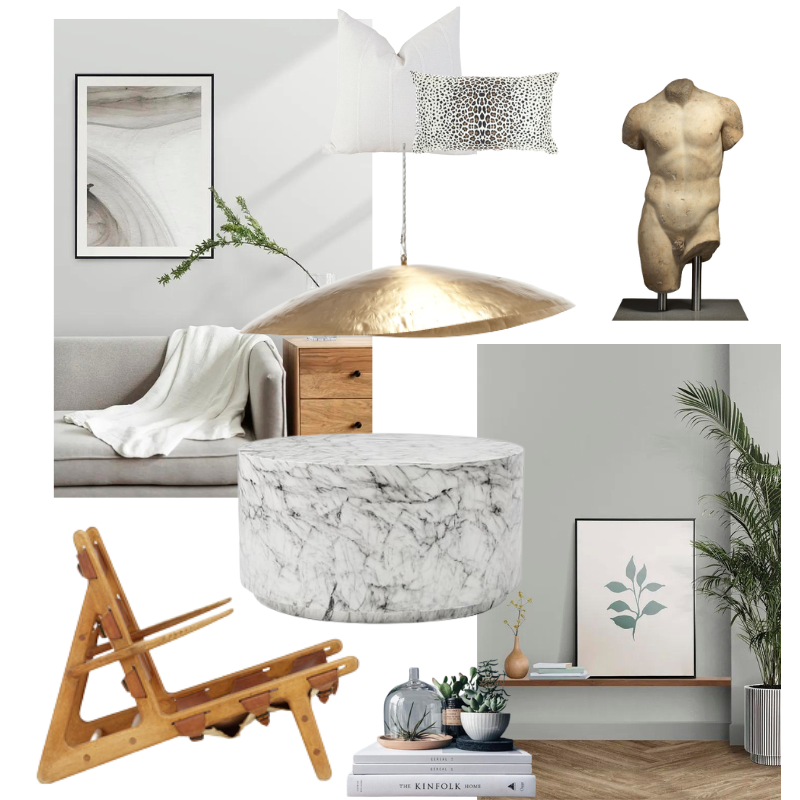
A mood board is a visual tool that designers use to communicate their design vision and establish a cohesive aesthetic for a project. It typically consists of a collection of images, textures, colors, and materials that represent the design direction and style of a space. Mood boards can be physical, such as a bulletin board or a collage, or digital, created using design software or online mood board creators.
“Mood boards are like visual recipes for your space. They help you experiment with different combinations of colors, textures, and patterns before you commit to anything, saving you time, money, and frustration in the long run.”
Says Nate Berkus, renowned decorator and author:
They are an essential part of the decorating process, as they help designers to articulate their ideas and ensure that everyone involved in the project has a clear understanding of the design direction. A well-designed mood board can be a powerful tool that guides the entire decorating process, from conception to completion.
Also: The Rule Of Three For Decorating Your Home
Why Is It Important To Create A Mood Board
There are many reasons why one should make an interior design mood board when decorating your space. First and foremost, a mood board helps to establish a clear vision and aesthetic for the space. By selecting images, colors, and textures that represent your design direction, you can create a cohesive and consistent style that guides your decisions throughout the design process. A mood board also helps you to communicate your design vision to others, such as clients or contractors, ensuring that everyone involved in the project has a shared understanding of the project’s direction.
Additionally, a mood board allows you to experiment with different color schemes and textures before making any concrete decisions, helping you to avoid costly mistakes and ensuring that you’re happy with the final result. In short, creating a mood board is an essential step in the interior design process that can help you to articulate your vision, communicate with others, and ensure a successful outcome.
Also: How To Create a Dining Room Gallery Wall
How to Make an Interior Design Mood Board: Step-by-Step Guide
Step 1: Define your vision
Before you begin making an interior design mood board, take some time to think about what you want your space to look and feel like. Ask yourself questions like:
- What is the purpose of the room?
- What mood or atmosphere do I want to create?
- What colors and textures do I prefer?
- What style or theme do I want to incorporate?
Once you have a clear idea of your vision, start collecting images and inspiration that reflect your design preferences. You can use online resources like Pinterest or Houzz to gather inspiration or create a physical inspiration board with magazine clippings and fabric samples.
Also: How To Design A Nursery: A Step-by-Step Guide for First-Time Moms
Step 2: Gather your materials
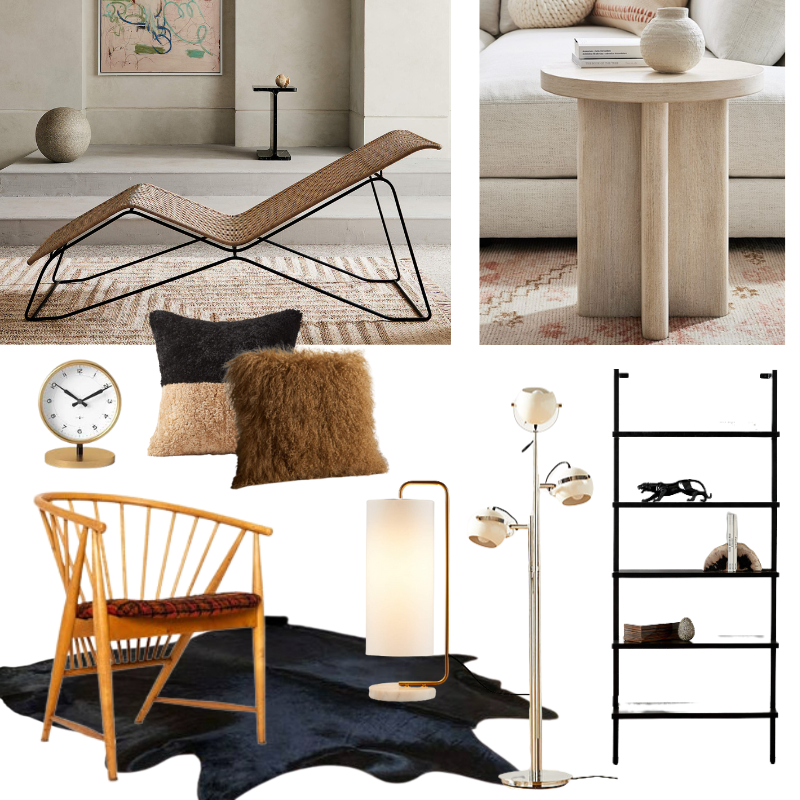
To create your mood board, you will need:
- A poster board or foam core board
- Adhesive (glue stick, tape, or pins)
- Scissors
- Images and inspiration materials (magazine clippings, fabric samples, paint chips, etc.)
Step 3: Select your color palette
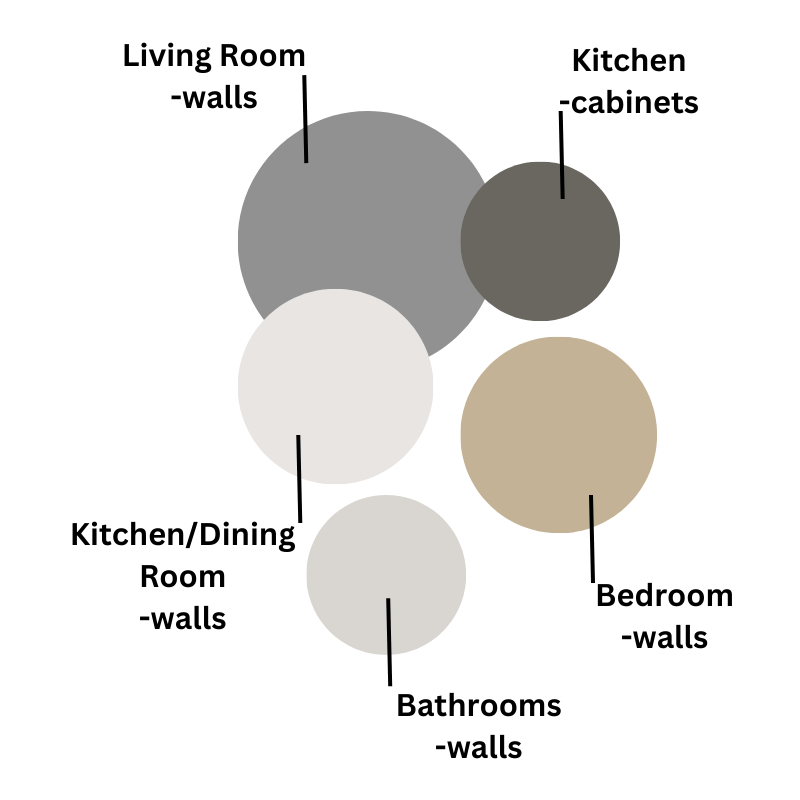
Color is an important element in decorating, as it sets the tone and mood of a space. Select a color palette that reflects your vision and preferences. You can choose a monochromatic palette (different shades of the same color), complementary palette (opposite colors on the color wheel), or analogous palette (colors that are next to each other on the color wheel).
Also: How to Design a Man Cave That Rocks
Step 4: Arrange your materials
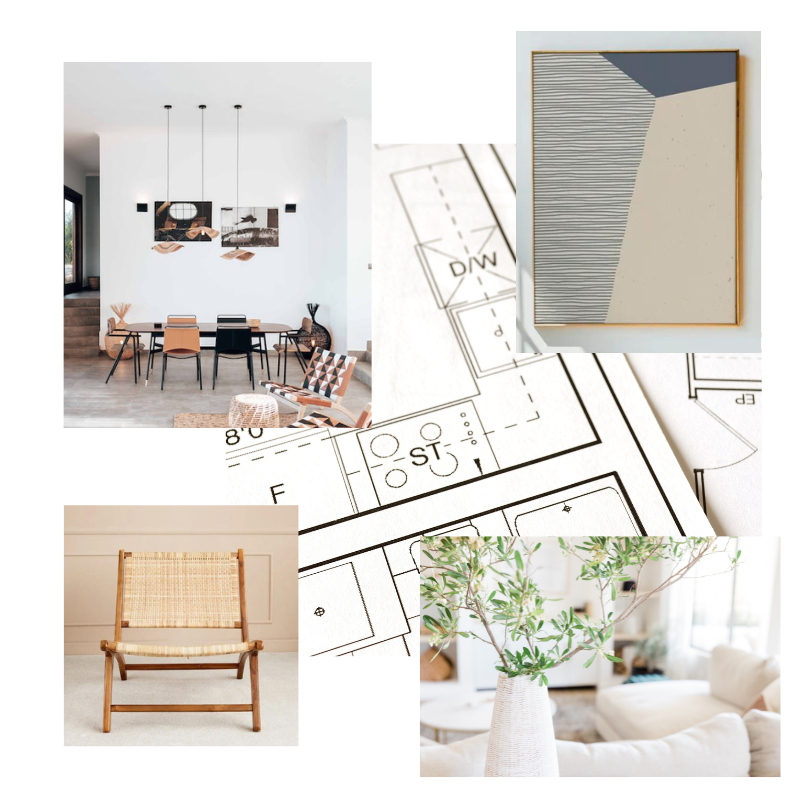
Now it’s time to bring your vision to life! Start arranging your images and inspiration materials on your board. Experiment with different layouts and compositions until you find a design that feels cohesive and balanced.
Step 5: Add details
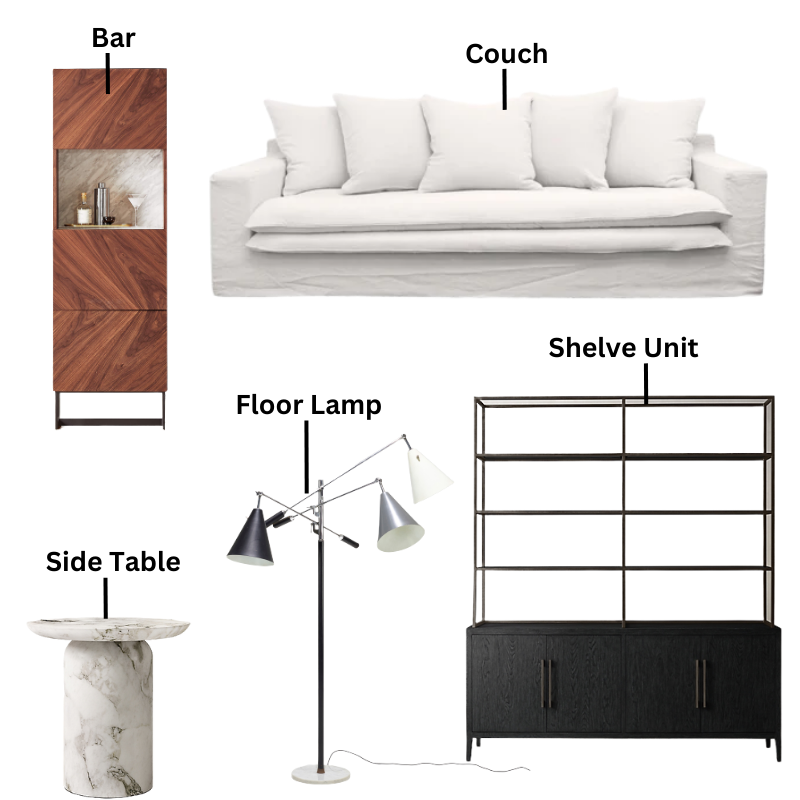
Once you have your main design elements in place, it’s time to add details. This could include selecting specific furniture pieces or accessories, choosing paint colors, or deciding on the perfect lighting fixtures. Be sure to include any important details that will help you visualize your final design.
“If you are looking for a way to style your space with wall art without breaking your piggy bank, then I recommend reading 10 Surprising Benefits of Printable Wall Art”
Step 6: Evaluate and revise
Take a step back and evaluate your mood board. Does it accurately reflect your vision? Is there anything missing or out of place? Revise and adjust as necessary until you are satisfied with your final design.
Also: How To Decorate a Desk at Home
Most Popular Tools To Create A Mood Board Online

If you prefer to create a digital mood board, there are plenty of online tools available to help you bring your design vision to life. Some popular options include:
“Mood boards are like magic mirrors reflecting your dream space. They spark inspiration, boost your confidence, and help you communicate your design vision to others, making the entire decorating process smoother and more enjoyable.”
Says Justina Blakeney, design blogger and author:
- Canva: Canva is a graphic design platform that offers a wide range of templates and design elements, including images, fonts, and colors. It’s a user-friendly tool that makes it easy to create a stunning mood board.
- Olioboard: Olioboard is an online interior design platform that allows you to create 2D and 3D room designs, as well as mood boards. It offers a vast library of furniture and decor items to choose from, making it easy to visualize your final design.
- Pinterest: Pinterest is a social media platform that allows you to create virtual pinboards of your favorite images and inspiration. You can search for and save images of furniture, decor, and color schemes to create a digital mood board.
- Roomstyler 3D Home Planner: Roomstyler is an online 3D home design tool that allows you to create detailed room designs and mood boards. It offers a wide range of furniture and decor items, as well as the ability to import your own images and textures.
- Sampleboard: Sampleboard is a mood board creation tool specifically designed for interior designers. It offers a range of templates and design elements, as well as the ability to collaborate with clients and colleagues in real-time.
No matter which online tool you choose, creating a digital interior design mood board can be a convenient and efficient way to bring your design ideas to life.
Also: Studio Apartment Ideas Layout That Wow: Maximize Your Space
How to capture images online for your mood board
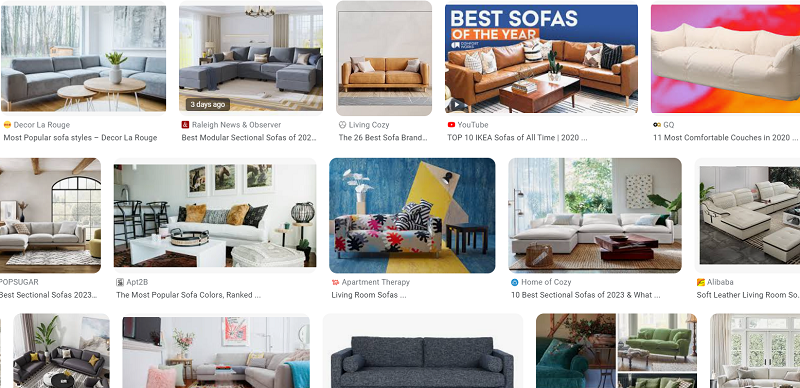
here’s a step-by-step guide on how to capture images online to add to your mood board:
Search for images: Use a search engine to find images that fit your design vision. Be specific with your search terms to get the best results.
Choose your images: Once you’ve found some images that you like, choose the ones that best represent your design vision.
Open a screenshot tool: There are many free screenshot tools available online that you can use to capture images from your computer screen. Some popular options include Lightshot, Snagit, and Nimbus Screenshot.
Capture the image: Open the screenshot tool and select the area of the screen that you want to capture. Make sure that the image is clear and high-quality.
Save the image: Once you’ve captured the image, save it to your computer. You can save it as a PNG or JPG file, depending on your preference.
Add it to your mood board: Finally, add the image to your mood board using a design tool or an online mood board creator. Make sure that it fits with the other images on the board and that it accurately represents your design vision.
By following these steps, you can easily capture images online and add them to your mood board. Remember to be selective with your images and choose only those that best represent your design vision.
Also: How to Choose The Right TV Size to Decorate Your Living Room
Gather Inspiration To Create Mood Board
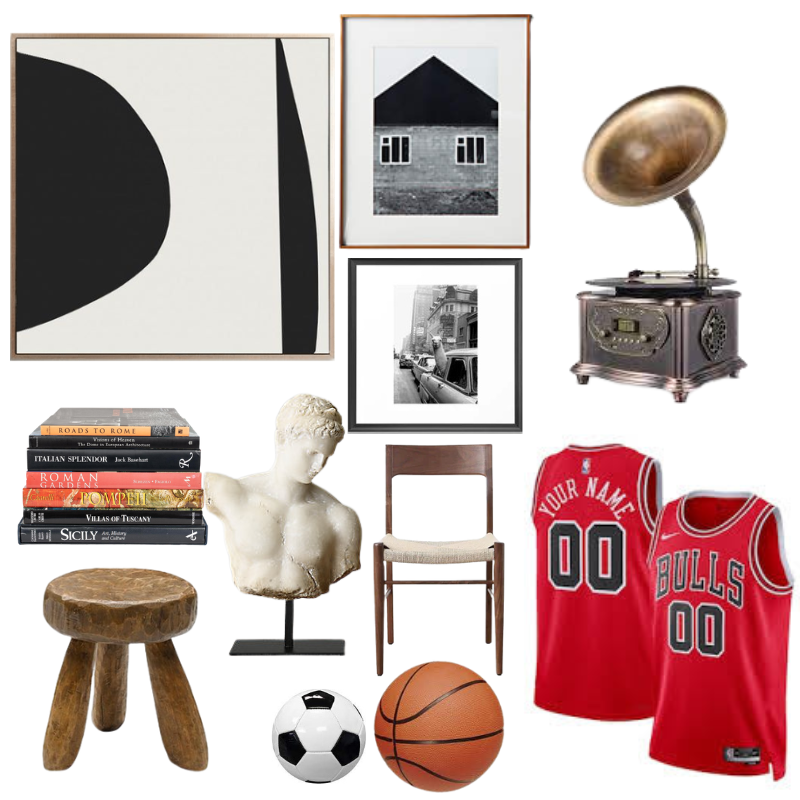
When it comes to creating a mood board, gathering inspiration is a crucial first step. Here are some tips on where to look for inspiration:
“Creating a mood board is like stepping into your dream home before it even exists. It allows you to explore your creative vision, identify potential clashes, and refine your ideas for a more cohesive and intentional design.”
Says Kelly Wearstler, acclaimed interior designer and author:
Pinterest: As mentioned earlier, Pinterest is a great platform to search for and save images of furniture, decor, and color schemes. You can create boards for specific rooms or design themes and use these images as a starting point for your mood board.
Instagram: Instagram is another popular social media platform that can be a great source of design inspiration. Follow interior design accounts and use hashtags to search for specific design styles or color palettes.
Magazines and Books: Design magazines and books can be a fantastic source of inspiration. Flip through the pages and tear out images that catch your eye. You can also use these images as a reference when searching for digital inspiration.
Nature: Sometimes inspiration can come from unexpected places. Take a walk in nature and look for colors, textures, and patterns that inspire you. You can even take photos and use them in your mood board.
Fabric and Paint Stores: If you’re looking for specific color schemes, fabric and paint stores can be a great resource. Browse through swatches and samples to find colors and textures that inspire you.
No matter where you look for inspiration, it’s essential to keep an open mind and be willing to experiment with different design elements. The goal of making an an interior design mood board is to create a visual representation of your design vision, so don’t be afraid to mix and match different styles and colors until you find the perfect combination.
Also: Tips for Home Decorating on a Budget: Where to Splurge and Save
How To Know Your Mood Board Is Completed
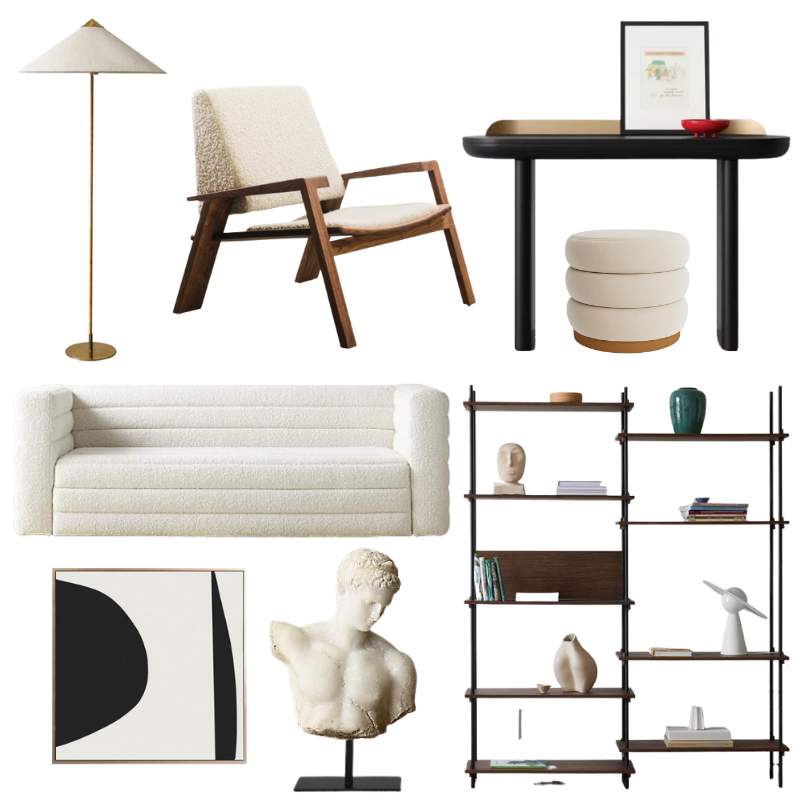
Knowing when your mood board is complete can be a tricky thing, but there are a few ways to be confident that you’ve captured your design vision. Here are some tips:
“Think of a mood board as your design compass. It keeps you focused and prevents impulse purchases. You can also share it with contractors, friends, or family to ensure everyone’s on the same page about your vision.”
Says Emily Henderson, stylist expert and founder of Emily Henderson Design:
Review your design brief: If you’ve been working with a client, review your design brief to make sure you’ve addressed all of their needs and requirements. Your mood board should reflect the design direction you’ve agreed upon.
Check for balance: Your mood board should be balanced in terms of color, texture, and scale. Make sure that one element doesn’t overpower the others, and that the overall effect is cohesive and visually appealing.
Consider the context: Think about the room or space that you’re designing for. Does your mood board reflect the desired mood or atmosphere? Does it work with the existing architecture and decor?
Get feedback: Show your mood board to someone else and get their feedback. This could be a colleague, a friend, or even the client. Ask them if they feel that the mood board accurately captures the design vision and if there’s anything that could be improved.
Trust your instincts: Ultimately, you should trust your instincts when it comes to your mood board. If you feel that it accurately represents your design vision and meets the requirements of the project, then it’s likely complete.
By following these tips, you can be confident that your mood board is complete and ready to serve as a guide for your design project.
Also: How To Mix Fabric Patterns Properly: Pattern Mixing Made Easy
Here are some final tips for creating a mood board
Be selective: It’s important to be selective when choosing images for your mood board. Don’t include everything you find – focus on the images that best represent your design vision.
Consider composition: The layout and composition of your mood board can be just as important as the individual images. Think about how the images will work together and how they will be arranged on the board.
Experiment with color: Color is a powerful tool in design, and your mood board should reflect your chosen color scheme. Experiment with different color combinations and consider how they will work together in the room or space you’re designing for.
Don’t forget about texture: Texture can add depth and interest to a design, so don’t forget to include images that showcase different textures and finishes.
Keep it cohesive: Your mood board should be cohesive and visually consistent. Make sure that all of the elements work together to create a unified design vision.
Use it as a reference: Once your mood board is complete, use it as a reference throughout your design project. It can help guide your decisions and keep you focused on your design vision.
How to make an interior design mood board can be a fun and rewarding part of the design process, and by following these tips, you can create a mood board that accurately represents your design vision and guides your project to success.
Also: How to Arrange a Small Living Room: The Ultimate Guide
Most Popular Tools:
10 Surprising Benefits of Printable Wall Art
15 Must-Have Accessories For Styling A Coffee Table
How to Choose the Perfect Interior Color Scheme for Your Home
Expert Guide On How To Buy A Rug For Each Room
Conclusion:
In conclusion, how to make an interior design mood board is an essential and transformative step in the interior design process. By curating a collection of inspiring images, colors, textures, and materials, a mood board allows you to establish a clear and cohesive vision for your design project. It serves as a visual roadmap, guiding you through the choices and decisions that shape the final outcome.
Through the process of creating a mood board, you are able to explore different design styles, experiment with various color palettes, and play with textures and patterns. It encourages you to think critically about the atmosphere and mood you want to create in your space, and how different elements work together to achieve that desired effect. By carefully selecting and arranging images, you can develop a keen sense of proportion, balance, and harmony that will inform your design decisions.
So, embrace the art of mood board creation, and let your imagination soar. Explore different styles, colors, and textures. Play with juxtapositions and experiment with unexpected combinations. Allow your mood board to be a springboard for innovation and creativity. With this powerful tool in hand, you’ll be well-equipped to embark on your interior design journey and transform any space into a captivating and inspiring environment that reflects your unique vision and style.
FAQs: How to Make an Interior Design Mood Board
Q: Can I create a mood board digitally?
A: Yes, there are many online tools and software that can help you create a digital mood board. Some popular options include Canva, Photoshop, and InDesign.
Q: What if I change my mind about my design halfway through the process?
A: Don’t be afraid to make changes as you go! Interior design is a creative process, and it’s natural to have new ideas and inspiration along the way.
Q: How many images should I include on my mood board?
A: There is no set number of images you should include on your mood board. The important thing is to include enough to accurately represent your vision and preferences.
CATCH THE LATEST IN HOME DECOR TRENDS:

Steal These 15 Expert-Approved Decorating Secrets

How To Accessories Your Living Room

Small Space? 10 Ways To Make A Room Appear Bigger

Make Your space Look Expensive
GET CAUGHT UP ON ALL THE INSPIRING DECOR TIPS:

18 Fresh Decorating Ideas To Update Your Fireplace

How To Create An Art Gallery Wall

